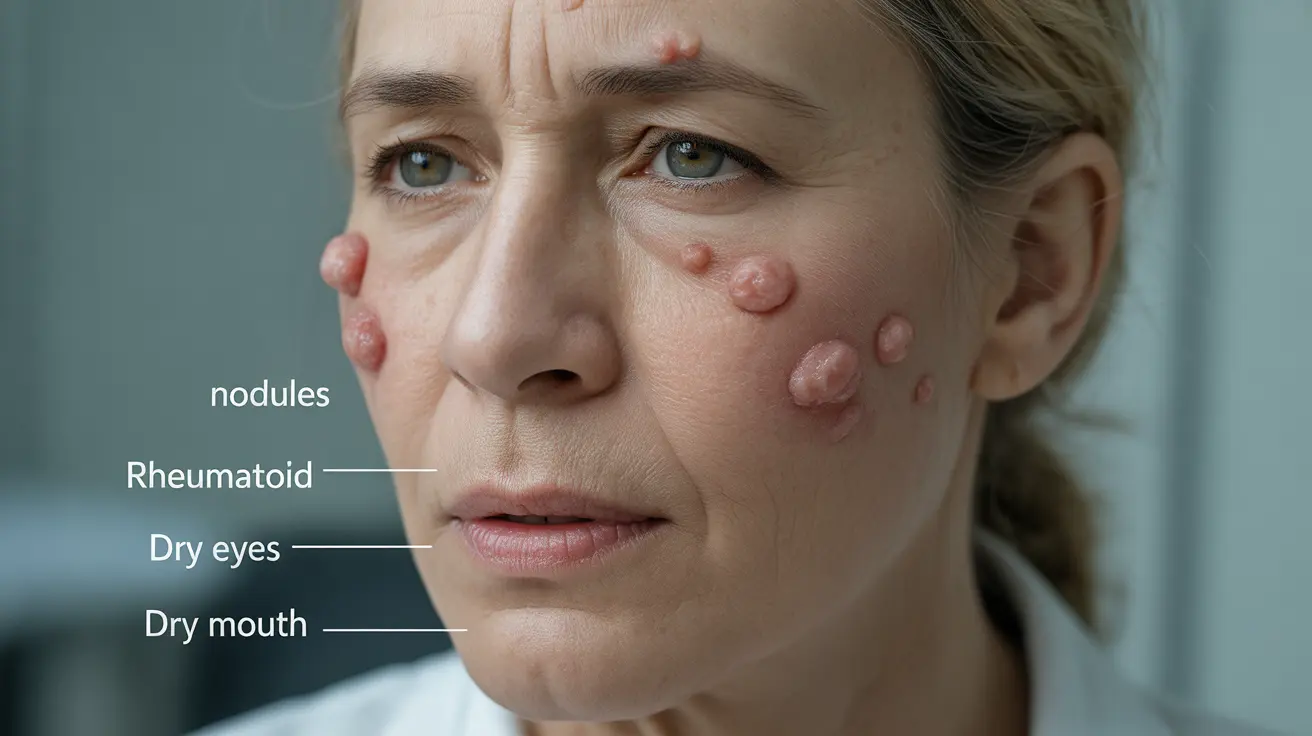Rheumatoid arthritis (RA) can affect more than just joints – it can also impact facial tissues, skin, and related structures. Understanding how rheumatoid arthritis manifests in the face is crucial for early recognition and proper management of these symptoms. This comprehensive guide explores the various ways RA can affect facial areas and discusses effective treatment approaches.
Understanding Facial Manifestations of Rheumatoid Arthritis
When rheumatoid arthritis affects the face, it can present in several distinct ways, impacting various structures and tissues. Recognizing these manifestations early can lead to better outcomes and more effective treatment strategies.
Skin Changes and Rashes
Rheumatoid arthritis can cause several distinctive skin changes on the face, including:
- Rheumatoid nodules
- Red, patchy areas
- Small vessel inflammation
- Paleness or redness of the skin
- Thinning of facial skin due to medication effects
Facial Joint Involvement
RA can affect several joints in the facial area, particularly:
- Temporomandibular joint (TMJ)
- Cricoarytenoid joints in the larynx
- Small joints near the ears
- Cervical spine joints that can impact facial movement
Effects on Eyes and Vision
Eye involvement is a significant concern for individuals with rheumatoid arthritis. The condition can lead to several ocular complications:
- Dry eyes (keratoconjunctivitis sicca)
- Scleritis
- Episcleritis
- Peripheral ulcerative keratitis
Managing Eye Symptoms
Treatment for RA-related eye conditions typically involves:
- Artificial tears and lubricating eye drops
- Prescription medications for inflammation
- Regular ophthalmological check-ups
- Lifestyle modifications to protect eye health
Mouth and Throat Complications
Rheumatoid arthritis can significantly impact oral and throat health through various mechanisms:
Oral Symptoms
- Dry mouth (xerostomia)
- Difficulty in jaw movement
- Gingivitis and periodontal disease
- Changes in bite alignment
Throat Issues
The throat can be affected through:
- Cricoarytenoid joint inflammation
- Difficulty swallowing
- Hoarseness
- Upper airway complications
Prevention and Management Strategies
Several approaches can help minimize facial complications of rheumatoid arthritis:
Skin Care Recommendations
- Regular moisturizing
- Sun protection
- Gentle cleansing routines
- Avoiding harsh skincare products
Lifestyle Modifications
Important lifestyle changes include:
- Maintaining good oral hygiene
- Regular dental check-ups
- Protecting eyes from environmental irritants
- Following a healthy, anti-inflammatory diet
Frequently Asked Questions
What are common skin symptoms of rheumatoid arthritis on the face? Common facial skin symptoms include rheumatoid nodules, redness, small vessel inflammation, and skin thinning. Some patients may also experience pallor or flushing of the facial skin.
How are rashes associated with rheumatoid arthritis typically treated? Treatment typically involves a combination of topical medications, systemic medications for RA control, and careful skincare routines. Corticosteroid creams may be prescribed for acute flares, while maintaining overall RA control often helps prevent skin manifestations.
Can rheumatoid arthritis cause dryness or other eye symptoms, and how are they managed? Yes, RA can cause significant eye dryness and other complications. Management includes artificial tears, prescription eye medications, regular ophthalmological monitoring, and protecting eyes from environmental irritants.
What are the potential effects of rheumatoid arthritis on the mouth and throat? RA can cause dry mouth, difficulty in jaw movement, periodontal disease, and throat problems including difficulty swallowing and hoarseness. The temporomandibular joint (TMJ) may also be affected, leading to pain and restricted movement.
How can people with rheumatoid arthritis prevent or reduce skin complications? Prevention strategies include maintaining good skincare routines, using sun protection, staying well-hydrated, avoiding harsh products, and working with healthcare providers to optimize RA treatment. Regular monitoring and early intervention for any new symptoms is essential.




